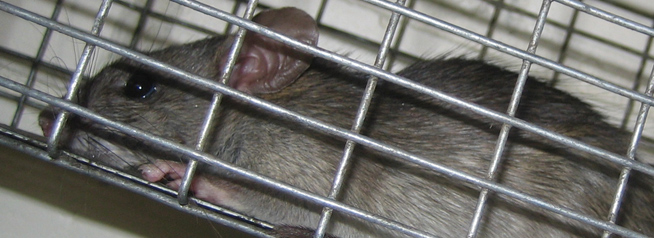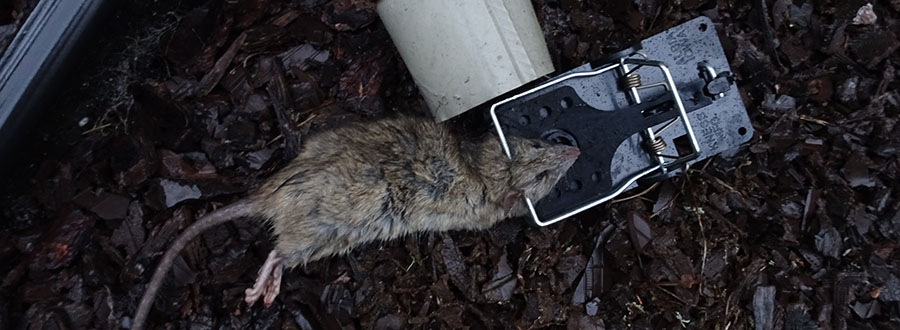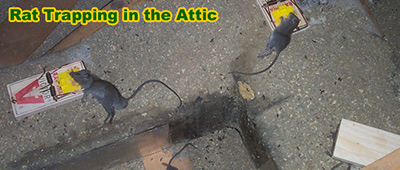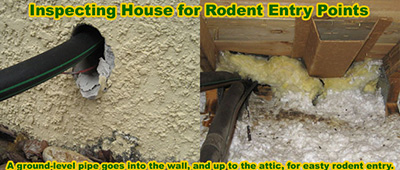Learn the Most Effective Bait for Trapping Rats
It doesn't really matter what bait you use to trap a rat. They're scavengers, and they'll generally go for anything you put down. They're omnivores, which means they eat both plant and meat matter, so you could use leftover dinners, pet food, anything you like. Sweet treats seem to do the best job of catching them, but different people have had different results. The art is getting the trap placement just right. If you don't do that, you won't have any luck at all, regardless of what bait you choose to put down.
We don't advise using traps to catch and remove rats, but if you have decided to take this action, make sure you check them regularly. You really won't want to leave food going bad just left around your home. You also don't want to leave a dead rat lying around, especially if you've used poison as well. We hope you haven't, as it's not the greatest method you could have chosen, but you certainly don't want your cat to become ill form accidentally ingesting the rat that you have poisoned.

Having a rodent problem is not to be taken lightly, and often takes a fair investment of time and sometimes money to get rid of them for good. Once you have the trap and decide on the best place to put it, it's good to have in mind a few options for bait that are going to get you the best results. It's also a good idea to know what kind of rat you're dealing with. For example, black rats are vegetarian whilst brown rats will happily eat meat.
Food
The first and perhaps most obvious type of bait for a rat is food. Most rats will eat almost anything, and people testify on the success of all kinds of bait. Here are a few universally successful food baits that can guarantee results.
- Peanut Butter: It has an enticing smell, and it's irresistible for a rat. It has lots of fat and protein and is sure to draw them in. Many professionals consider this the #1 option.
- Chocolate: Rats are known to hoard sweet foods as an evolutionary instinct to build energy reserves. Morsels of chocolate are the perfect high sugar snack, perhaps try breaking it up so it releases more of its sweet aroma.
- Bacon: Much like peanut butter, bacon is packed full of fat and protein, as well as tasty salt. It also has a strong smell that will lure rats over a long distance. Think about bacon scraps lying in a garbage can, is it even possible for rats not to be there?
- Seeds: Something you need to keep in mind when attempting to deter rats is cleaning up birdseed. This is because any dropped seeds below the bird feeder will quickly invite rats if your area is prone to infestation. You can use this fact to your advantage and use the seeds as bait.
- Dried Fruit: Another snack with a high sugar-concentration. It can be broken up and taken away easily, and it's soft and supple.
When baiting a rat, keep in mind that it's better to use the same bait repeatedly instead of switching it up. Rats instinctively take smaller amounts of new foods to avoid poisoning themselves, so they will more readily go for food that they know is safe.
Nesting Materials
If food baiting is unsuccessful, consider this alternate tactic. As well as prolific eaters, rats breed extremely rapidly. They have multiple litters a year, and they often have to make nests out of whatever they can find. If they're up in the attic, they will likely use insulation or other soft materials. Nesting materials can be very successful as bait, especially if you know that your rat is nesting close by and you see evidence of them gathering materials.
- Dental Floss: Something most people have on hand, dental floss is a good bet for a bait. Rats will happily gather up a bundle of floss for their nests, so if you have some spare, it's worth a try.
- Cotton Wool: The softest of soft, and a quite possible heaven for a rat and its babies. Shred up a few cotton wool balls and lay the wisps in the trap to entice the rat.
- Soft insulation: If you don't have the other two, try using soft insulation. Don't go ripping your roof apart, but if the rats are using the insulation anyway, then it may help to use their material of choice.








